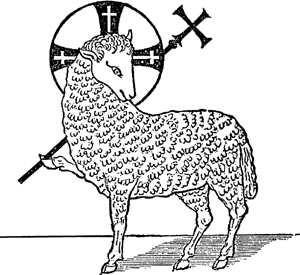Agnus Dei
Also found in: Dictionary, Thesaurus, Acronyms, Wikipedia.
Related to Agnus Dei: Opus Dei
Agnus Dei
Agnus Dei (ăgˈnəs dēˈī, änˈyo͝os dāˈē) [Lat.], the Lamb of God, i.e., Jesus. The lamb of the Passover sacrifice is said to prefigure the crucifixion. Isaiah calls the expected Messiah the Lamb of God, and Jesus is met by John the Baptist with the words, “Behold, the Lamb of God, who takes away the sins of the world.” In the Mass the Agnus Dei, or Lamb of God, is said or sung while the communion bread is being broken for distribution. It is usually the final movement of choral masses. In Anglican worship it is sung during communion. In iconography a lamb with halo and cross is called an Agnus Dei.
The Columbia Electronic Encyclopedia™ Copyright © 2022, Columbia University Press. Licensed from Columbia University Press. All rights reserved.
agnus dei

agnus dei
McGraw-Hill Dictionary of Architecture and Construction. Copyright © 2003 by McGraw-Hill Companies, Inc.
Agnus Dei
lamb of god. [Christian Tradition: Brewer Dictionary, 17]
See: Christ
Allusions—Cultural, Literary, Biblical, and Historical: A Thematic Dictionary. Copyright 2008 The Gale Group, Inc. All rights reserved.